Zenon Palacz, Isotopx Ltd, Middlewich, Cheshire, UK
Introduction
For the measurement of isotope ratios in nanogram to picogram sized samples of uranium and plutonium, an ion counting detector is used. However, when measuring a series of isotopes, any individual isotope may only be detected for a fraction of an individual analysis cycle. This will reduce the measurement precision because not enough ions are collected. For picogram size samples the number of ions detected is extremely limited, and the ion signal will not only be short lived, it might also be unstable. This is a problem with sequential analyses, as errors can be introduced from the beam interpolation. A far more sample efficient mode of analysis is to simultaneously measure all of the isotopes. This is multiple ion counting.
Phoenix uses an array of conversion dynode ion counting detectors (Figs 1 and 2) positioned in the same focal plane as the Faraday cups. Ions pass through a 1mm ion beam defining slit and impact with the conversion dynode which generates electrons. The electrons are then detected by an electron multiplier positioned at 90º to the incident ion beam. The multiplier does not “see” any of the ions.
The ion counters are individually motorized and so can be used for a variety of applications. For example they can be used for uranium and also for osmium in negative ion mode.
This work shows the stability of the ion counters by measuring the uranium standard SRM U500.
Analytical conditions
Uranium was measured on 4 ion counting detectors: 238U (L4), 236U (L5), 235U (L6) and 234U (L7). Each analysis comprised a 60 second baseline measurement at +/-0.5amu followed by 100, two second integrations of a uranium ion signal of 100,000 cps 238U. A set of ten such analyses took approximately one hour. The results are shown in Table 1.
Short term gain stability
The data in Table 1 are not corrected for relative gain between the channels, so the data while not accurate shows the stability of the relative gains over a period of one hour. For the 235U/238U, where both isotopes have a count rate of 100,000 cps, the external precision is 0.05 % 1RSD. This is comparable to the individual analysis precision of 0.03%. For the minor isotopes the reproducibility is the same as the individual measurement precision
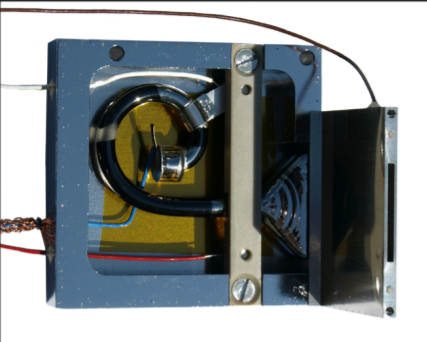
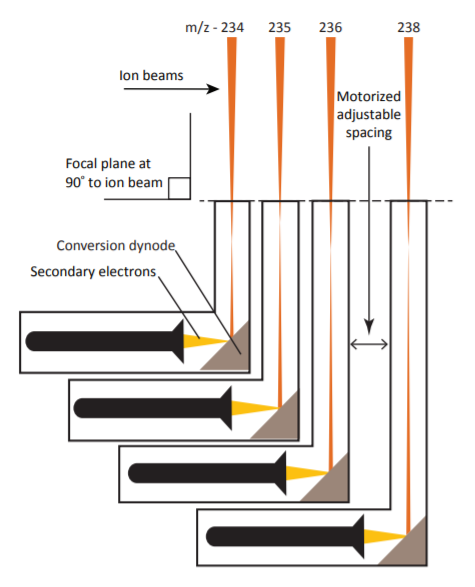

Long term gain stability
Figures 3, 4 and 5 show the results of 7 sets of data over a period of 7 hours, for 236U/238U, 234U/238U and 235U/238U respectively. The reproducibility over the 7 hour period is comparable to that over the 1 hour period, showing that there is no appreciable drift of gain over the longer period. This means that a standard measured at the start would still provide excellent calibration of the gains over the extended period. This is especially important for TIMS isotope ratio analysis as a smaller number of standards need to be run.
Conclusions
- Multiple ion counting works well for analysis of small amounts of uranium.
- It is stable over long periods and offers a viable alternative to single collector analysis, particularly when sample size is strictly limited.
- These detectors can also be used for other isotope systems e.g. plutonium.
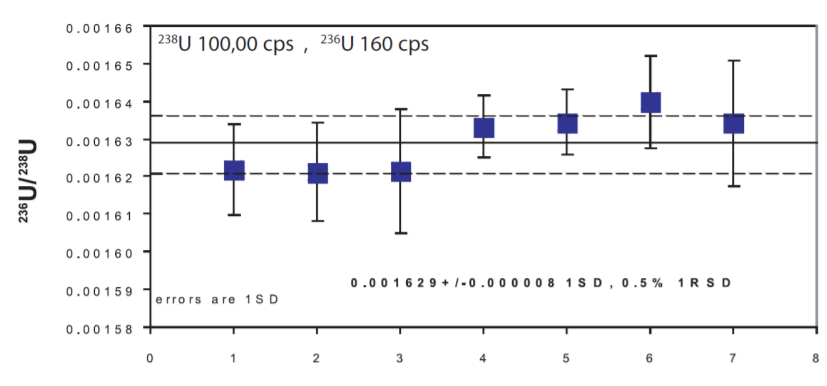
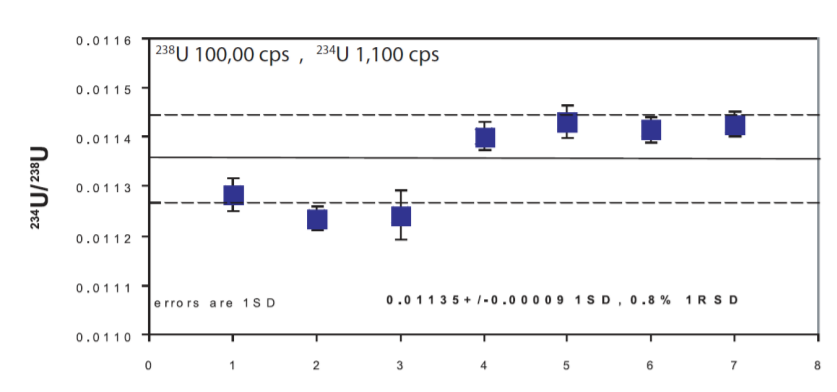
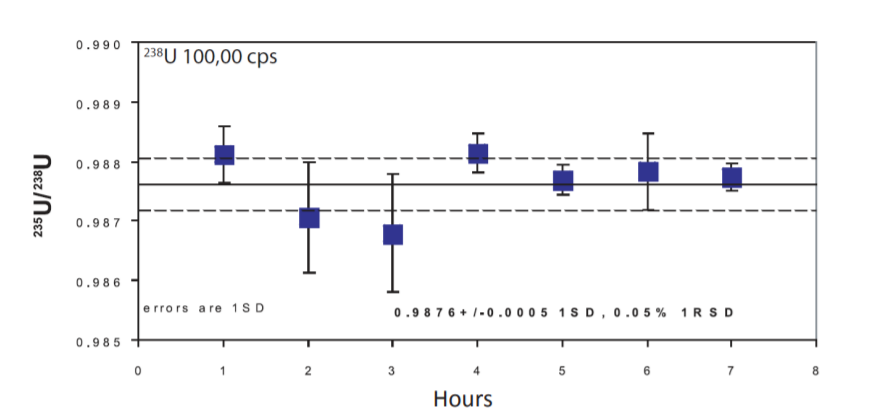
Download Technical Note
Download the complete Technical Note: Evaluation of the stability of multiple ion counting detectors on Phoenix TIMS